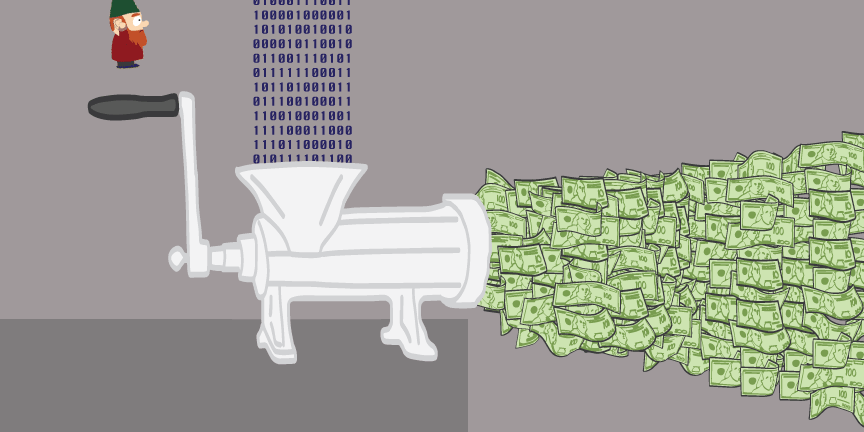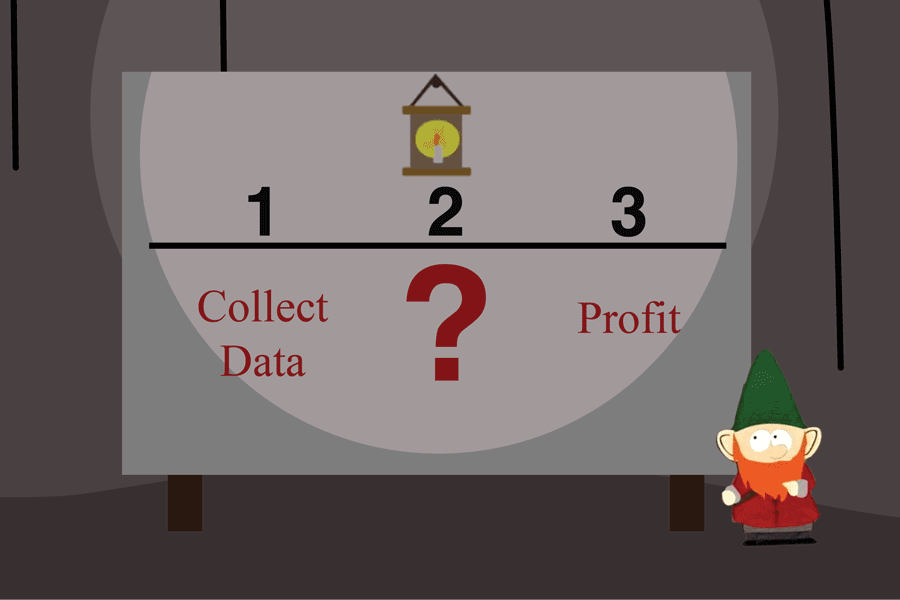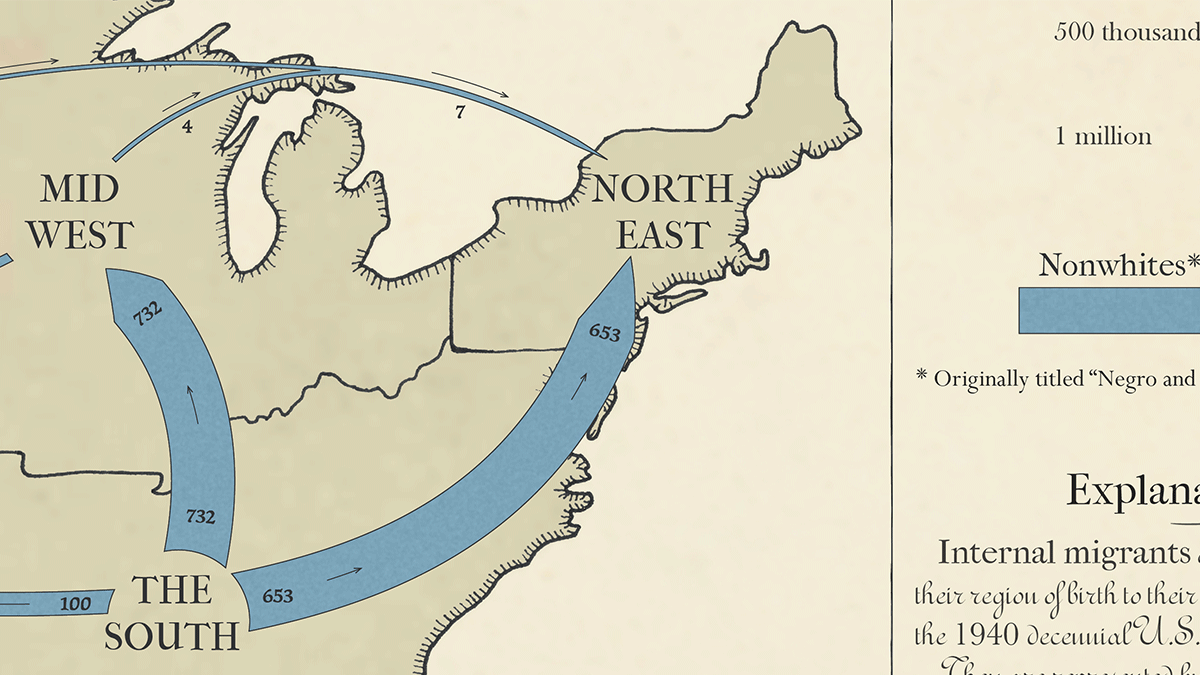
Turning Data Into Cash
Creating meaningful businesses.
Everyone is giving away all of their data to anyone willing to listen. But beware: the products and services you build (how you get cash) on top of this newfound data lode are not equal.
You have an opportunity to do something special with the data you are collecting. You can give back to the person where that information originated. Think of it like data karma: you give and you take — and bad data karma is bad for business. Good data karma requires transforming data into something meaningful for a real person. You have to create value for the average stats-illiterate smartphone-slinging American consumer. If you can create value, then you have a fair shot at cranking out cash.

How do you create meaning? The value of data-products can be rated in terms of human agency — one’s capability to act. Maybe your product entertains only and has no impact on human agency. Perhaps instead it enhances human agency. Or it is possible that it removes the need for any human agency.

Gnome: “Phase one is collect data. Phase three is profit! Get it?”
Kyle: “So, what’s phase two?”
Gnome: (.…)
Here's how to do phase two.
• • •
Information as ENTERTAINMENT is the simplest way to convert data into something appealing for mass consumption. People crave information, whether we need it or not. Economics and psychology research has found that we value information for its own sake, even if it doesn’t change how we make decisions: managers gather more information than they use and yet still ask for more, patients want to know more about their condition but do not want more control over medical decisions. Information need not have any practical utility other than satisfying our own curiosity to create value for its audience. Our individual agency is of no concern.
“Curiosity is the most superficial of all the affections; it changes its object perpetually; it has an appetite which is very sharp, but very easily satisfied; and it has always an appearance of giddiness, restlessness and anxiety.” -Edmund Burke, 1757
Content & social network feeds excel at delivering curiosity-satiating infotainment — think Twitter, Facebook, and podcast apps. Each supplies an endless buffet of snackable content. Of course we don’t always consider infotainment “entertaining,” your exercise app creates feelings of accomplishment and defeat with trend lines. We are consumed by news reports of horrific disasters abroad and stock market fluctuations — neither of which directly affect our agency. Every content-packed data-product exists to shape our emotional state. If you’re staring at something and it doesn’t directly influence your actions, it’s probably infotainment.
Infotainment: You are in a traffic jam and are eased to be informed by your map app that the cluster won’t last for much longer. You can’t escape, but hey, at least you can enjoy that the road is only red for the next half mile.
My favorite infotainment is data storytelling, media similar to what you find at The Upshot of The New York Times, ESPN’s 538, or pulled out of National Geographic magazine. The prettiest data happens here. It has to be be pretty because the only value it gives is entertainment. There is no practical utility beyond satiating curiosity and creating that I’m a well-read person confidence. At its best, data storytelling becomes art. Alberto Cairo calls it The Truthful Art. It reaches out, pulls us in, and we wonderfully get lost in a flow state considering how the world works, how life works, what does it all mean. This immersive experience is what I strive to create in my data adventures at Info We Trust. Data storytelling is the perfect infotainment marriage of emotion and intellect.
People are thirsty to fill gaps in knowledge — it makes them feel good. We want to feel better, and infotainment increasingly feeds that need. I believe the demand for quality entertainment will continue to increase. So how do you make cash with infotainment? Get eyeballs on the content and show them ads. If your content (and marketing) is really good then you can implement freemium or membership models for your superfans. Unfortunately, the high your audience gets from your infotainment is fleeting and the consumer will quickly be scrolling again for a new hit. In 2016, the traditional internet business model remains:

Human-machine SYMBIOSIS is the next level of turning data into cash. It can be accomplished if your product has practical relevance beyond pure entertainment; if it enhances our human agency. The data is transformed into information that helps a person make a decision — now. Of course this symbiosis has existed long-before the app store, it is as old as information itself: the pilot with her control panel, the general with his map.
Erik Brynjolfsson & Andrew McAfee’s man and machine running together is becoming a reality. Computers help us increase our productivity. Perhaps they are at their best when they feed us the right inputs and then get out of the way of what we do best: making tough decisions in complex environments.
What’s symbiosis? You are driving and the map recommends a different route because there is a traffic jam ahead. You review the recommendation, alter course, and avoid a frustrating delay.
Our lives are already filled with tools that impact our behavior in the real world, in real time, because of the information they serve to us. Yelp, dating, mapping, and travel booking apps all ask for a little information, combine it with what they already know about you, and spit back some really useful knowledge.
(Chinese food) + (your location) = recommendations
Business intelligence tools fit into this type if the quantitative picture of the world they present informs decision-making. Data-fueled dashboards (and software like Tableau that powers them) are becoming ubiquitous. Bill Shander has called 2016 as a watershed year — the year data visualization is commodified.
Making cash helping people make better decisions can be more tricky because it’s tough to slap a valuation on a better decision. For consumer products there are still ads but they can get twisted: Yelp charges the business it rates a fee, not the consumers whose decision is being influenced. Other services, like dating apps and business intelligence tools, charge subscription and licensing fees.
Human-machine symbiosis is appealing because it preserves the person as the central intelligence unit. We still get to make the decisions, and now they are better-informed. But symbiosis may only be a speed bump on our way to data’s ultimate product.

Data-fueled MAGIC is the future of information products. Each one will serve a different need but they will all have the same feature: it just works. There is no decision required, no customer input at all. The data will be working hard behind-the-scenes to make our world friction-free.
“Any sufficiently advanced technology is indistinguishable from magic.” -Arthur C. Clarke, 1973
In exchange for your agency — your participation in decision making — you can be released from having to perform mundane tasks. It takes some trust in the data system, but we are already comfortable with digital assistants coordinating everything mom used to do. Data magic is most impressive when it is coupled with real “world of atoms” operations: data linked to vehicles, fulfillment centers, and industrial kitchens. The rising artificial intelligence tide is already getting our toes wet.
What’s magic? You tell a service where you want to go. It picks you up and you don’t really pay attention to the journey until you arrive. In today’s world, you just hired an Uber and didn’t notice if there was any traffic because you were glued to your phablet in the backseat. In the tomorrow’s world traffic no longer exists.
Caution is prudent as we yield our agency to machines, not because the machines are untrustworthy, but because it isn’t so easy to understand the magician behind the magic. How do these new models make cash? There is surely a simple linkage between a customer who requests the service and payment, as in the car ride, but that is only the beginning of the cash you can make with magical data products. In order for these systems to operate friction-free they require much more knowledge about who you are, more than a the search criteria and current location that feeds Yelp.
There is a certain belief in data exhaust; a faith that if you generate data, there will be someone who wants to buy it. The large bundle of data that is fueling these magical services can quickly become uncoupled from the originator of the data. A patient’s medical record is abstracted and sold to fuel drug development. Your browsing history is thrown in a pot with others and poked at by a marketing company trying to learn consumer trends. Your call history is logged so that the government can go and find the next bad guy.
People exchange their data for some cheap infotainment already, they will certainly reveal it all for magical utopian products. It is up to us to make sure it circles back meaningfully, somehow, to someone.

Infotainment, symbiosis, magic. These three types are the difference between being stuck in traffic, avoiding traffic, and the traffic not existing at all. We are witnessing transportation moving neatly from one type to the other, but that doesn’t mean that infotainment and symbiosis will someday cease to exist across all other categories. We are not destined for Wall-E hoverchairs. With more data magic throughout our lives we will all have more opportunities to experience life as we wish: yes more entertainment, but also helping each other, learning elegant truths, and positing new interesting questions that spark investigation.
“How lucky we are to live in this time… a still more glorious dawn awaits.” -Carl Sagan, 1980
• • •
